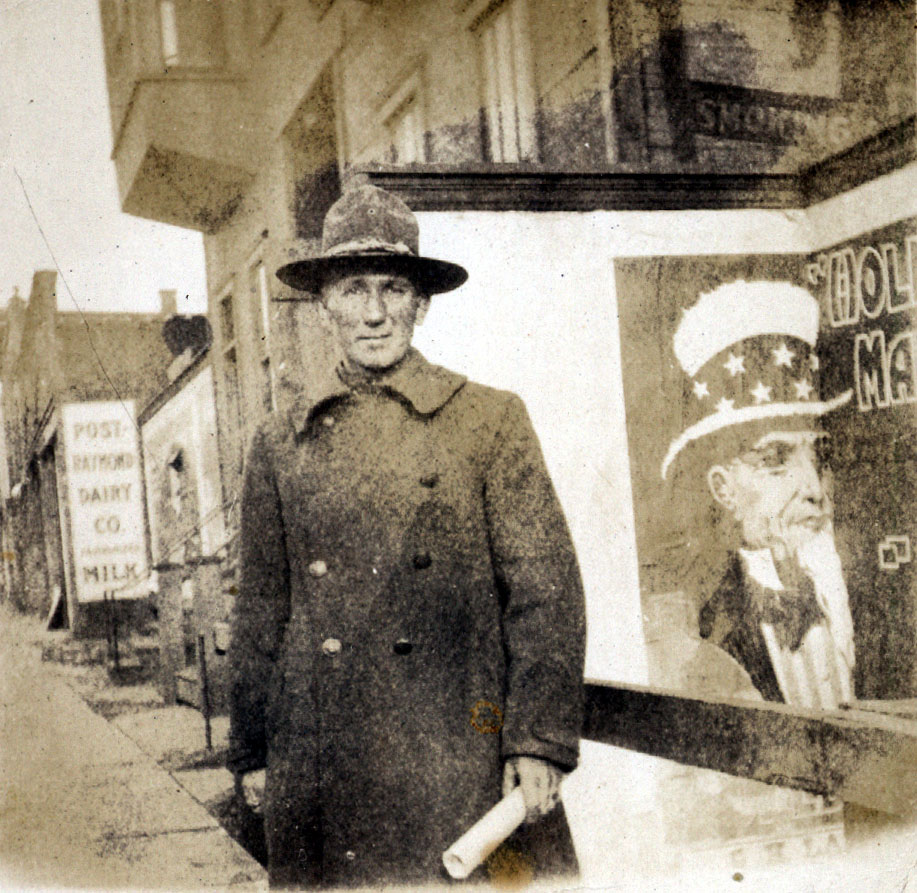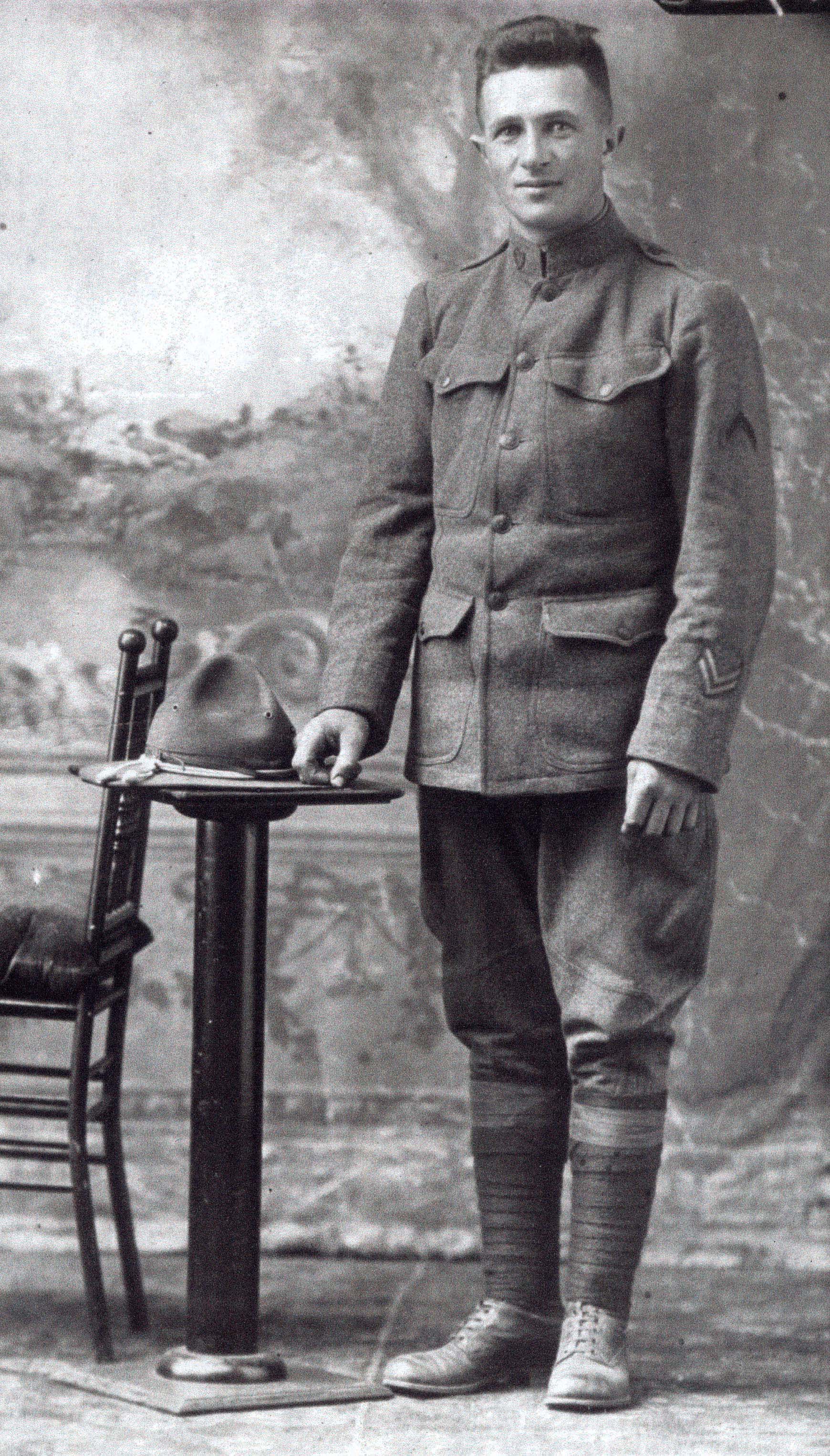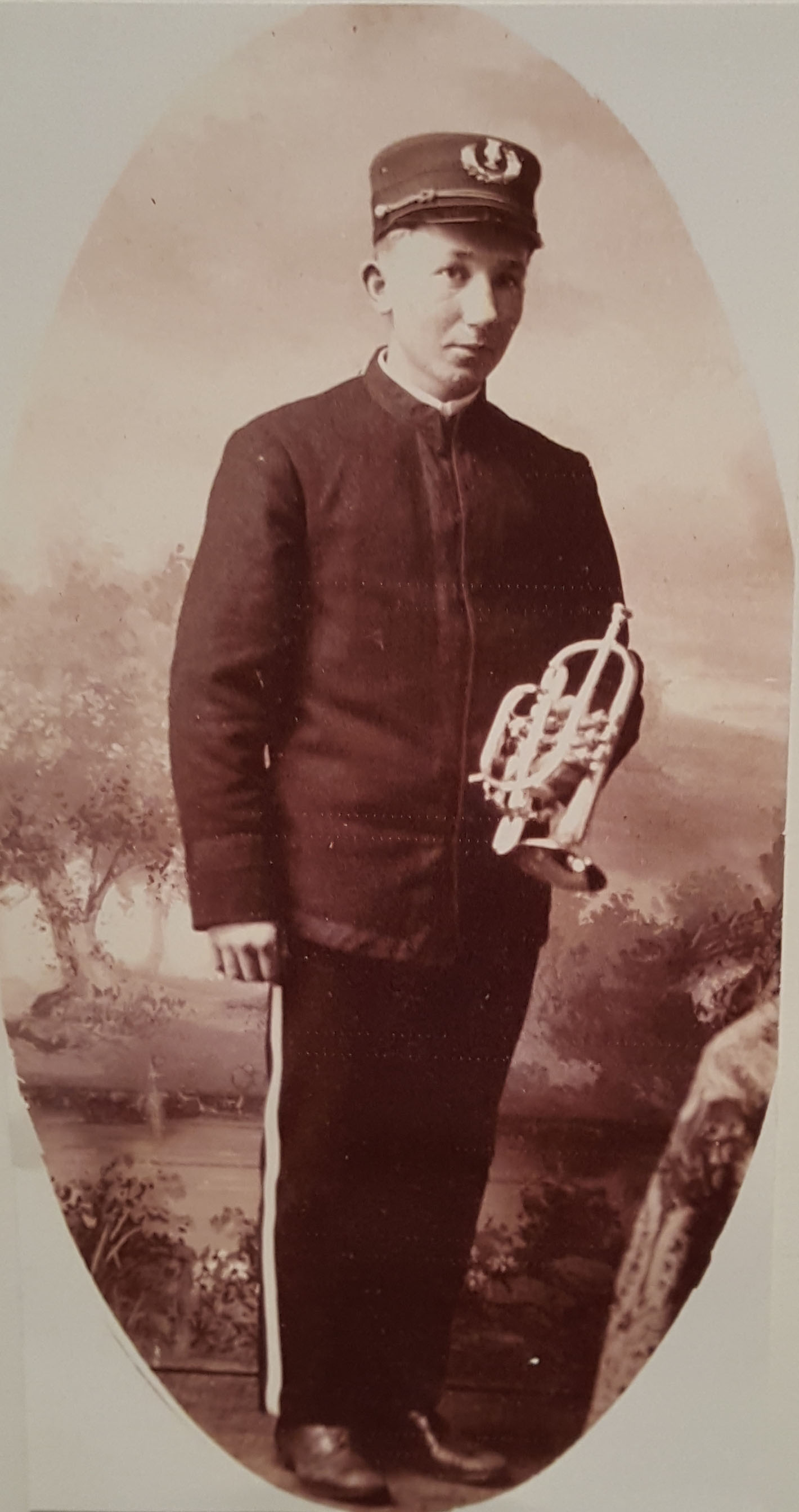|
Last year in Arcadia, as they did throughout the Nation, we celebrated the hundredth anniversary of the end of World War I, the war that was “to end all wars.” It had been a long, ugly, heavily trench-fought war where any muddy, bloody gains were often measured in yards, not miles. When it finally ended with that armistice signing November 11, 1918, local families like the Luther Gilberts and Everett Akermans must have been elated; their sons Earl and Orville, respectively, were coming home. You can also bet that young Arcadians Stephen Brown, Herman Bischoff, and Joe Murlin were relieved and in a mood to celebrate. They were still on the front lines in France when the word came down. These three guys would later join fellow WW II veterans and charter Arcadia’s first VFW Post, Post 9412.
|
|
|
But, for a couple young Arcadia soldiers that Armistice brought anything but rejoicing--or thoughts of going home. Bill Larsen and Julius Zilch were part of the 339th Infantry Regiment of the U.S. Army’s 85th Division. On November 11th, 1918, they were in a fight for their lives in the wet bogs and cold of Northwest Russia. The Arctic winter was setting-in and they were fighting desperately to prevent the Bolshevik Army from pushing them into the Arctic Ocean. They were caught in the woes of a horrific mission which would ever be remembered as “The Polar Bear Expedition.”
Their precarious plight began in July of that year when the governments of Great Britain and France convinced U. S. President Woodrow Wilson to join them in the Allied Intervention in North Russia. Russia, once a dependable ally on the Eastern Front, was now involved in a great Civil War. On July 16-17, 1918, Czar Nicholas II and his whole household had been executed and Lenin’s communist Bolshevik “Red Army” was strong and on the move. Through a treaty signed with the Bolsheviks, Germany and the Central Powers could now focus almost full-force on the Western Front against Great Britain and France and even consider establishing submarine bases on ports in North Russia.
The Allied Intervention had two objectives: 1. Secure the stockpiles of Allied war materials in Archangel (originally intended for use on the Eastern Front.). 2. Establish a rallying point for the friendly Czech Legion troops (once 50,000 strong) now roaming loose in Russia. On July 17, 1918, President Wilson agreed to a limited participation of American troops, stipulating that they would only be used for guarding the stockpiles of war material. Three days previous, the U.S. Army 85th Division, including the 339th Infantry with Bill Larsen and Julius Zilch, had left its training base in Fort Custer, Michigan and was heading for France. Surely Bill and Julius believed at the time (with America’s full involvement and the enemy in retreat) the war would soon be over and their combat stint in France would be short.
But, their prospects all changed when General John Pershing received President Wilson’s directive. The 339th Infantry Regiment, along with the First Battalion of Engineers and other ancillary units, instead of France, were ordered directly to England. There they were quickly trained, outfitted with Russian guns and shipped promptly to North Russia. It seems the 339th, composed mostly of Michigan recruits (about 3/4th from Detroit) had been chosen because they might be accustomed to the cold. They arrived in Arkhangelsk (also Archangel), on the White Sea just below the Arctic Circle, on September 4. (Over one hundred of the deporting soldiers were already sick with the Spanish flu and would die in the city’s primitive hospitals during the weeks thereafter.) They fell immediately under British command; the Brits had just occupied the city the month before when they drove out a small force of Bolsheviks.
But, now Bill, Julius, and the entire 339th were in for a second shocking surprise. The Allied war materials they were sent to defend had been already taken by the retreating Bolsheviks and moved south up the mighty Dvina River. Thus, the American troops were ordered immediately to aid in offensive operations, including trying to rescue the Czech Legion. One Battalion of the 339th was sent up the Dvina River, another up the Vologda Railroad. Company M, Julius’ company, became part of the Railroad mission. The Vologda Railroad Front was about 100 miles south of Archangel. Conditions along the way were miserable. The marshy terrain was flooded with standing water and the first snows began in mid-October. Combat encounters with the Bolsheviks were many. The horrid conditions and the bloody combat endured by Company M in North Russia are well described in a short book by its then commander, Captain Joel Roscoe Moore; it’s entitled “M” Company 339th Infantry in North Russia”. Bill Larsen was in Company “C” which was with the “River” Battalion. His unit would advance even further south--into the soggy, cold Vaga River area. He would endure the same harsh, brutal conditions as “M” Company.
In spite of the extreme terrain and weather, for six weeks the 339th did successfully push back the Bolshevik forces, but, soon the fronts became hundreds of miles long. They were also narrow and difficult to maintain and protect. By the end of October, the Allies had to halt the offensive; with the rapid onset of winter, they settled-in to hold the grounds already gained. But, during that frigid, sometimes 60 below, winter, the growing Bolshevik army went on its own offensive, inflicting many casualties and forcing the Allies to regularly retreat. By this time, the Allied commanders were giving up hope of raising an effective local force of anti-Bolshevik soldiers and, also, of ever linking with the Czech Legion. For the 339th, it was now a matter of surviving the Arctic winter and the “Bolo” (Bolshevik) onslaught.
Somehow, with their unbelievable perseverance in withstanding the cold, hunger, wounds and sickness, with their ability to adapt to using any weapons available—and with whatever other attributes God gave them, Bill Larsen, Julius Zilch, and the majority of soldiers in the 339th Infantry Regiment did survive that Arctic winter. Come April, most were there, still alive and fighting, but, also, very weary and depressed wondering why they were in this horrific, far away wasteland, fighting in a war which for them had no meaning. They were feeling much abandoned and forgotten. It was April and the port of Archangel was still frozen shut.
After the November 11 Armistice in 1918, there had been growing public resentment about “The States” ever getting involved in that “Russian Civil War”. Families and friends of soldiers stationed in the American Expeditionary Force in Russia had early-on begun writing letters to newspapers and petitioning their Congressmen to bring the troops home. Finally, on February 16, 1919, President Wilson reacted and directed his War Department to begin plans to withdraw AEF from North Russia.
On April 17, Brigadier General Wilds P. Richardson arrived at Archangel aboard an icebreaker with orders to organize a coordinated withdrawal of the American troops “…at the earliest possible moment.” On May 26, the first half of an 8000 member British Relief Force arrived to relieve the Americans. During the withdrawal, the men of the North Russia AEF started calling themselves “Polar Bears,” and, thus, began thoughts for the design that would soon become their insignia.
|
 Bill Larsen Bill Larsen
 Julius Zilch Julius Zilch
|
|
In early June, the bulk of the 85th Division sailed for Brest, France, then New York City and home. Sadly, on June 2, 1919, when the rest of Company “M” was sailing out on a ship called the “Czar”, Julius Zilch was left to depart on a later vessel. He and 19 others were ill and hospitalized with “camp sickness.” Later in the “States” this was diagnosed as “undulant fever”--probably caused from eating undercooked meat or drinking unpasteurized milk (in the scattered, backwoods villages of North Russia).
It’s not certain, after the War, if Bill Larsen went back to playing music as he’d done with the Johnson and Kalbitzer Bands earlier that century, but, we do know Julius Zilch continued farming and operated his large farm on Zilch Road for many years after returning. And, we especially know that these men, who may have felt forlorn and forgotten a century and one year ago, will not be forgotten in the Arcadia Area Historical Museum. There we proudly exhibit Bill’s picture, his coronet and the very drum he beat while with the locally famous Johnson Band. In salute to Julius, we proudly display his picture in full uniform, his helmet and, thanks to his descendants, his very 339th Infantry uniform. Of very special interest, in his uniform pocket, Julius still carried various foreign monies he’d saved along the way.
Update: More about "Polar Bear" Bill Larsen after WWI
During the summer of 2019, Bill’s nephew, Wyler Rigling (born 1927), visited the Museum and reminded us of a couple things: After the war, Bill, with two brothers, went to work at the Arcadia Furniture Factory. He and his brothers are included in the Arcadia Centennial book photo of the Furniture Factory crew. The same photo is on display in the Museum. Bill remained with the Factory until he retired, and he remained single all his life.
|
 Bill Larsen in his band days Bill Larsen in his band days
|